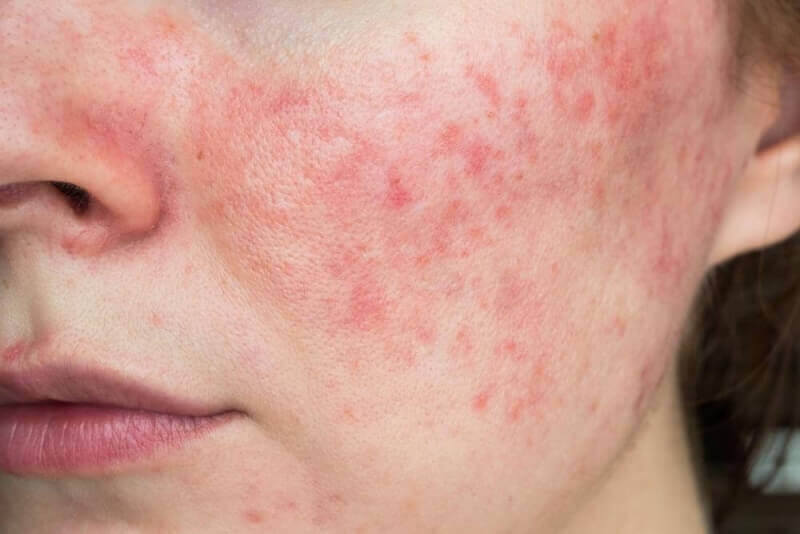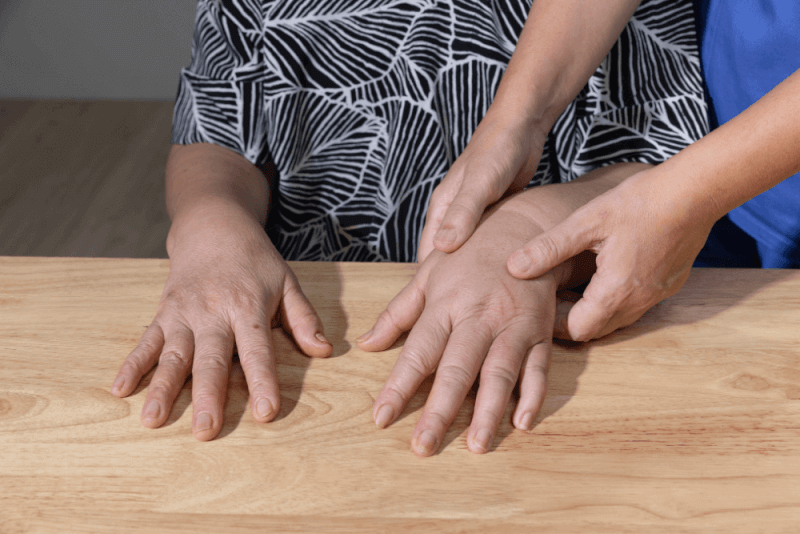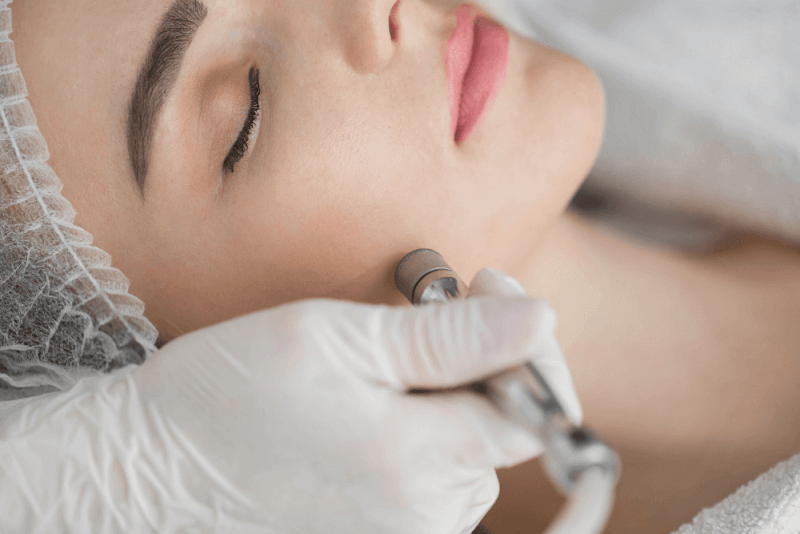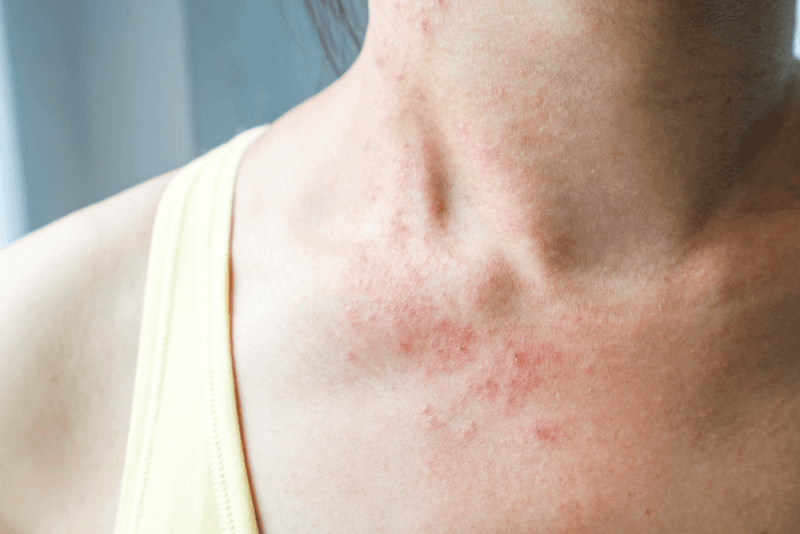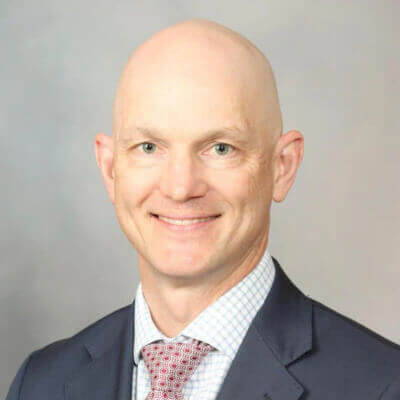What is rosacea?
Rosacea, a disease that causes rashes on the face, is usually seen on the cheeks, nose and forehead. The disease, which usually begins to appear after the age of 30, manifests itself in the form of exacerbations throughout life.
Rosacea, also called rosacea, is an inflammatory skin condition that can be seen on all parts of the body, especially the eyes and face, and causes redness. Rose disease, which has different varieties, can cause pimples and swelling as well as redness. One of the incurable diseases, rosacea requires lifelong methods to reduce the symptoms caused by the disease.
What are the types of rosecea?
There are 4 subtypes of rose disease. The differentiation of rose disease into varieties is caused by the differentiation of symptoms.
Erytmatotelangiectatic
This form of rose disease is persistent. It causes dilation of blood vessels and redness on the skin surface. Periods of exacerbation occur unexpectedly and then disappear.
Papulopustular
In the papulopustular variety, the symptoms are in the form of pimples. These pus or fluid-filled pimples cause the skin to swell. For this reason, it is often confused with acne.
Phymatous
In this form of rosacea, there is swelling and thickening of the skin. Usually affecting the nose, phymatous causes the skin to be bumpy. Symptoms can therefore make the nose appear more bulbous.
Ocular
Ocular rosacea affects the eyes. It causes irritation of the eyes, resulting in bloodshot and watery pupils. These patients develop light sensitivity in the eyes and swelling of the eyelids causing pain. These swellings are also called stye among the people.
Who is most affected by rosacea?
Rosacea can affect people of any age and gender. However, it affects fair-skinned people more. Symptoms usually appear after the age of 30. For this reason, it is rarely seen in children and adolescents. In addition, it is more likely to be seen in people with a family history of rosacea.
According to research on rosacea, rosacea in men causes more severe symptoms. The biggest reason for this is delayed treatment.
Rose disease (Rosacea) diagnosis method
In the diagnosis of rosacea, it is the symptoms on the skin that are important and there is no specific test to be used for diagnosis. Therefore, the diagnosis is based on the symptoms seen in patients. In addition to the symptoms, the medical history of the patients will also help to confirm the diagnosis.
Symptoms of rosacea disease
The symptoms of rosacea vary from person to person. In particular, the images it causes on the skin can appear in different ways. In some patients, not all symptoms caused by the disease occur. As well as the symptoms being different, there are also common symptoms and these common symptoms include the following.
Flushing
The most characteristic symptom of rosacea is frequent reddening of the skin. These blushes occur in attacks and are the earliest sign of rosacea. In addition, rosacea can cause permanent redness. These rashes are similar to sunburn.
Pimples and bumps
Another characteristic symptom of rosacea is the appearance of red, small and solid swellings. These bumps may resemble pimples in some people. In addition, a burning or stinging sensation may also develop in the swelling. Although rosacea causes acne-like images, it does not cause blackhead formation.
Blood vessels are visible
Finally, the symptoms of rosacea include the appearance of blood vessels that appear as thin red lines on the skin.
Other symptoms
In addition to the symptoms mentioned above, rosacea can also cause the following symptoms.
- Irritation of the eyes
- Watery eyes
- Bloodshot eyes
- Shallot
- Reddening of the eyelids
- In severe cases, damage to the cornea and loss of vision
- Burning or stinging sensation on the face
- Itching
- Dry appearance
- Red spots that look like a rash and are raised (the skin around these spots does not show any changes)
- Thickening of the skin
- Swelling of the face
Which parts of the body are affected by rosacea?
Rosacea primarily causes symptoms on the face, but in later stages it can also cause changes in the skin on other parts of the body. These areas include the following.
- Scalp
- Neck
- Ears
- Chest
- Back
Causes of Rosacea
The causes of rosacea are unknown. However, studies on the disease are ongoing. As a result of these studies, there is a strong opinion that rose disease is seen for the following reasons.
- Presence of a condition affecting the nervous system, blood vessels or immune system
- There are microscopic mites that live on the nose, cheeks and body. An increase in the population of these mites can lead to the appearance of rose symptoms.
- Infections caused by the H. Pylori bacteria are also thought to cause rosacea in people.
- Finally, the cathelicidin protein, which protects the skin from infections, does not function properly, causing the symptoms of rosacea.
Factors triggering rosacea
There are triggers that cause an exacerbation of the symptoms caused by rosacea. These triggers differ according to individuals. For this reason, identifying the triggers is very effective in controlling exacerbations. The most common symptoms include the following.
- Hormonal changes
- Skin or hair products used
- Spicy food
- Alcohol consumption
- Stress
- Foods that are too hot or cold
- Sun exposure
- Nem
- Wind
- Anxiety
- Anger
- Shame
- Vigorous exercise
- The common cold
- Cough
- Fire
- Hypertension
- Milk products
- Tomato
- Citrus
- Chocolate
In order to pinpoint the triggers, patients need to keep a diary for several weeks about how all factors affect their skin, from the skin products they use to the foods they consume.
Rosacea (Rosacea) treatment methods
The treatment of rosacea varies according to the individual patient and aims to reduce the severity or prevent the worsening of the symptoms caused by the disease. Treatment methods for rosacea can basically be categorized under 3 headings.
Surgical methods
In patients with severe rosacea, surgical methods are used to eliminate the symptoms called rhinophyma, which cause shape changes in the nose.
Laser treatment
Especially in rose patients with visible blood vessels, laser treatment is used to remove this image. In some patients, it is possible to completely improve the appearance, while in some patients, the appearance can be alleviated.
Medication
Various topical and oral medications are used to relieve the swelling, pimples and redness caused by rosacea. These medicines help to reduce exacerbation. The drug groups used in rose disease are as follows.
- Doxycycline: a group of medicines used to reduce acne.
- Brimonidine: used to reduce redness
- Ivermectin, azelaic acid and metronidazole are used to reduce swelling and acne.
Lifestyle changes
Although it is not possible to completely cure rosacea, it is possible to control it with some lifestyle changes. These changes can be applied in combination with other treatments to increase the success of the treatment.
- First of all, patients should use sunscreen with a factor of at least 15 before going out in the sun.
- In winter, the face should be protected from the weather with a balaclava or scarf.
- The face should not be touched.
- Mild cleansers should be used to clean the face. Skin products should be free of alcohol and ingredients that can cause skin irritation.
- The skin should be constantly moisturized with appropriate moisturizers.
- Moisturizers should be applied after topical medications and the topical medications used to apply the moisturizer should be allowed to dry.
- Care should be taken to ensure that the products used are not comedogenic.
- Activities that may cause an increase in body temperature, such as heavy exercise, should be avoided.
- Alcoholic beverages should not be consumed.
- It is recommended to use electric shavers instead of razors.
- Spicy foods should not be consumed.
- Steroid (OTC) creams should not be used unless recommended by a doctor. Because they cause symptoms to worsen.
- Stress, which is an important trigger of rosacea, needs to be controlled.
- It is important that patients get regular and quality sleep.
- Patients should prefer sports with low exercise intensity, such as swimming and walking.
- Meditation, yoga and breathing exercises will help control stress.
Complications caused by rosacea
Rose disease brings with it a number of different complaints. First and foremost among these is vision loss caused by ocular rose disease. In addition, inflammation of the eyelids can occur if the disease affects the eyes.
Because rosacea causes skin deterioration, it can also cause patients to experience feelings of low self-esteem, shame and disappointment. A vicious circle can arise as emotional states affect the disease. For this reason, consultation with experts to minimize the psychological effects caused by rosacea also supports treatment.


